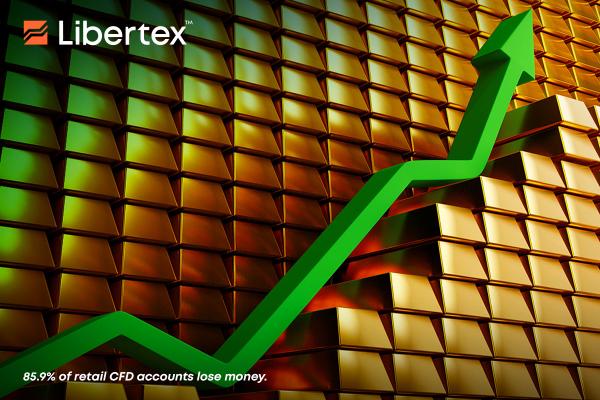Gold has been making headlines of late after breaking through a key psychological level as it once again approaches its August 2020 all-time high of $2075 per Troy ounce. Indeed, the yellow metal has been steadily rising since the start of the year, and the reasons behind its good fortunes are numerous.
Beyond runaway inflation, banking sector fears, and geopolitical insecurity, there are also more subtle factors driving up the gold price, all of which we will look at in more detail in this article. But what most investors and traders would like to know is: Will this run continue, or have gold’s gains already been made? While we can’t answer this question for sure without a crystal ball, we can provide an overview of what is behind the precious metal’s growth this year and assess how likely these are to remain relevant going forward.
Crises everywhere
If you believed everything you’ve seen in the news recently, you’d be forgiven for thinking the end of the world was nigh. From the ongoing geopolitical uncertainty now on virtually every continent of the Earth to the economic uncertainty embodied by the latest US banking crisis, the future looks very bleak, indeed. First, we had the collapse of SVB and Signature Bank in the US, then there was the last-minute rescue of Credit Suisse in Europe, and now there are fears that even more high-risk lenders could be next in line.
While this kind of news is bad for most assets, for safe harbours like gold, it’s music to investors’ ears. At its highest level this year of $2065, gold had gained over 15% YTD, and though it has since corrected down slightly, the long-term perspective seems as if the way is paved for future rises in 2023. Some were surprised that we hadn’t seen this kind of movement last year when inflation was well into the double digits while gold remained fairly stagnant, but as is often the case in financial markets, not everything is exactly as it seems…
Counting those dollars
We will all surely remember the hyperinflation of last year all too well. It seemed as if prices would never stop rising, and, as any gold bug will tell you, high levels of inflation virtually always translate to increases in precious metal prices. But gold’s dollar price was virtually flat for the entirety of 2022. Why? Well, this was also a time of historic strength for another haven asset, the US dollar.
The greenback famously rose above parity with the euro, for one, a feat unmatched since the early 2000s. And since gold’s price is almost always quoted in USD, much of the real-world gains made by gold were masked. Now that the dollar is back at pre-pandemic levels against the other majors, all of this previously unseen growth is now being revealed. What’s more, the ongoing uncertainty and high interest rate environment mean that there is still an overarching trend towards safety, which is further buoying gold prices this year. So, will the USD remain at more stable levels going forward, or could we see further strengthening in the medium-to-long term?
Fed up with inflation
To answer that, we need to look closely at the single most influential player when it comes to the dollar’s dynamics: the US Federal Reserve. As we’ve already touched upon, gold is largely up due to inflation, the exact same market force that the Fed has been trying to combat with aggressively hawkish monetary policy. Unfortunately, the recent mini-banking crisis has forced the US regulator to cut its tightening cycle short of its target rate of 6%. Though it did announce a 25 bp increase to 5.25% in its latest policy decision, Powell’s rhetoric was much more restrained in April and May, as all guidance about future hikes disappeared from post-meeting comments.
A side-effect of the Fed’s tightening has been higher US Treasury bond yields, the inverse relationship of which with the price of gold is well-established. Now that the Fed has been forced to accept a more dovish wait-and-see approach, yields are falling sharply. For example, the two-year T-note yield now stands at a hair above 4% compared to 5.05% in March. If this trend continues, those looking to hedge against inflation will pour into gold, thus increasing its value over the medium term.
Trade precious metals with Libertex
Libertex is an experienced CFD broker with a long history of connecting traders and investors with the financial market. Beyond forex and equities, Libertex also offers CFDs in a range of precious metals, including silver, platinum, palladium, and, of course, gold. Since Libertex allows its clients to trade both long and short positions, you can put your money to work, no matter what you think the future holds for gold. Best of all, CFD trading means you don’t have to purchase physical metals to profit from any positive price changes, and our multi-award-winning, one-stop trading platform allows you to hold your entire portfolio in one manageable location. Enjoy ultra-tight spreads and some of the lowest commissions around when you become a Libertex client. For more information or to create your own account today, visit www.libertex.com/signup
Risk Warning: CFDs are complex instruments and come with a high risk of losing money rapidly due to leverage. 85.9% of retail investor accounts lose money when trading CFDs with this provider. Tight spreads apply. Please check our spreads on the platform. You should consider whether you understand how CFDs work and whether you can afford to take the high risk of losing your money.


